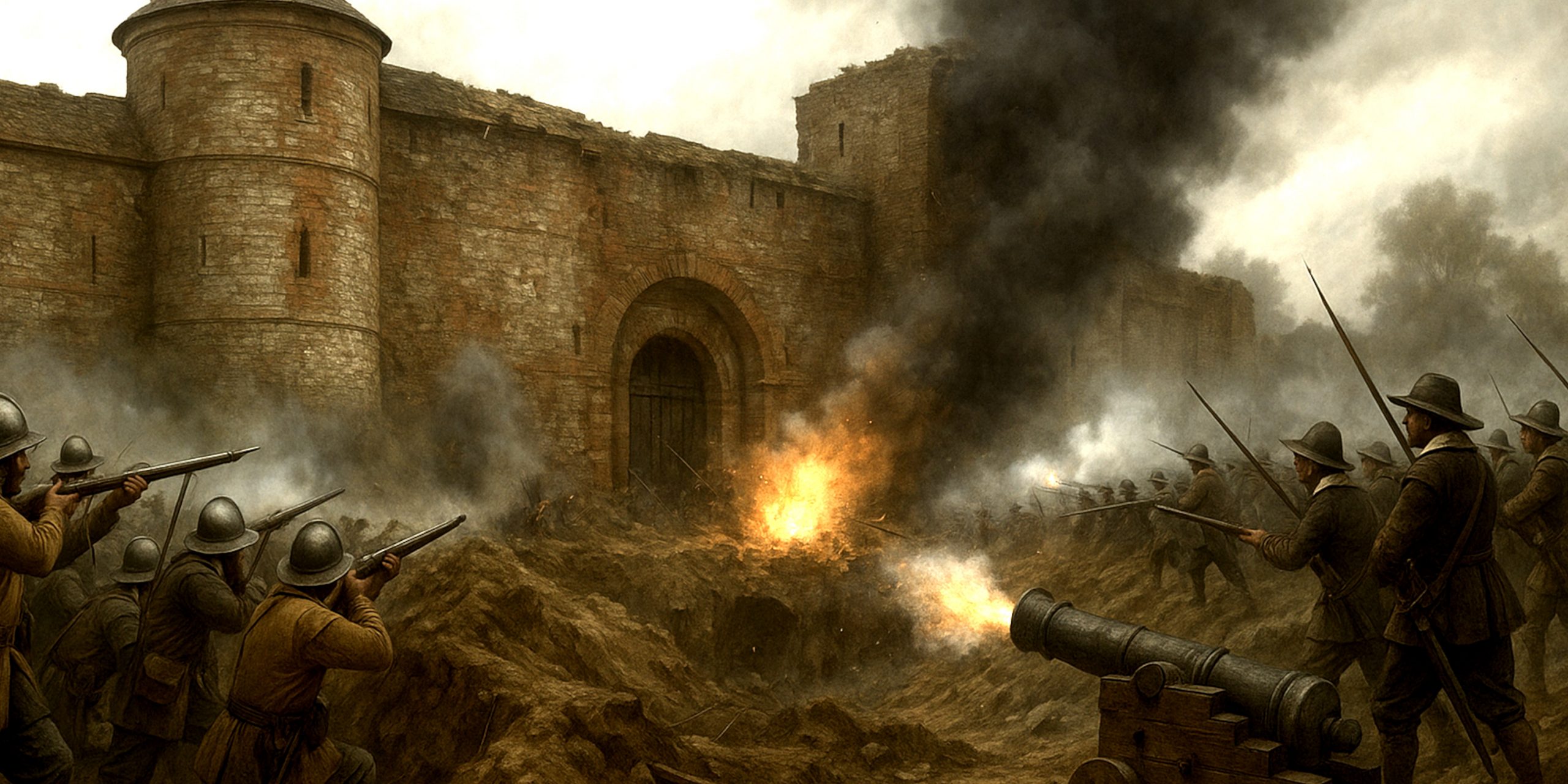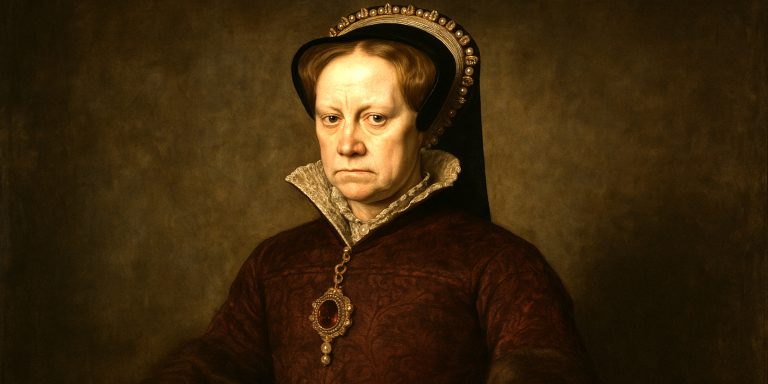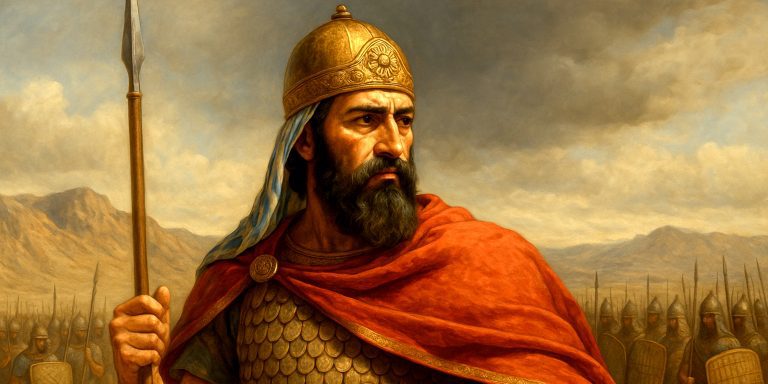
The siege and battle of Colchester in 1648 marked a moment when the already frayed nerves of England finally snapped. It was a long, grinding struggle in a walled town that did not particularly want to be a stage for national collapse yet found itself swept up in the storm. As a historian, I find Colchester fascinating because it shows the Civil War at its most stubborn. No grand cavalry sweeps, no dashing charges, just hard sieges, hunger, and the slow cracking of a Royalist last stand. At times it feels less like a battlefield and more like a tragic civic marathon.
By the summer of 1648 the Second English Civil War was underway and Colchester found itself held by a Royalist force that had failed to secure wider support. Parliament’s New Model Army under Sir Thomas Fairfax arrived, and there began a brutal siege lasting eleven weeks. The Royalists under Sir Charles Lucas and Sir George Lisle refused to surrender despite starvation and hopeless odds. Their stand turned Colchester into one of the most poignant final acts of the Royalist cause.
Forces
A clear view of the opposing forces helps frame the scale and strain of the siege.
Parliamentarian Forces
| Commander | Notes | Estimated Strength |
|---|---|---|
| Sir Thomas Fairfax | Commander in Chief of the New Model Army | About 5,000 to 6,000 |
| Thomas Rainsborough | Senior officer, naval links, rising political figure | Part of Fairfax’s command |
| John Lambert | Leading cavalry commander | Detached elements present |
Royalist Forces
| Commander | Notes | Estimated Strength |
|---|---|---|
| Sir Charles Lucas | Local and respected Royalist officer | About 4,000 |
| Sir George Lisle | Veteran commander | Senior leadership |
| Lord Capel | Noble supporter providing legitimacy | Civic influence rather than numbers |
Arms And Armour
A detailed look at what both sides carried into this grinding siege.
Parliamentarian Equipment
| Unit Type | Arms | Armour |
|---|---|---|
| New Model Infantry | Matchlock muskets, pikes, mortars for siege bombardment, side arms such as mortuary swords | Buff coats, iron helmets, breastplates for pikemen |
| Cavalry | Pistols, carbines, backswords of the mortuary and hanger types | Lobster-tailed pot helmets, cuirass front and back |
| Artillery | Demi-culverins, sakers, mortars | Minimal armour, leather aprons |
Parliamentarian Sword Types
• Mortuary sword with stylised hilt masks
• Backsword with single edged blade for cavalry
• Infantry hangers often used for siege work and close encounters
Royalist Equipment
| Unit Type | Arms | Armour |
|---|---|---|
| Infantry | Matchlocks, pikes, shorter wheel-lock pistols among officers | Mixed armour due to supply shortages |
| Cavalry | Cavalry swords often of Walloon type, pistols | Three quarter armour in some elite units, but increasingly rare |
| Garrison Artillery | Old demi-culverins and falconets on the walls | Limited armour |
Royalist Sword Types
• Walloon swords with shell guards
• Cavalry sabres of continental influence
• Officer’s rapiers, especially among senior gentlemen
Leaders And Troop Composition
Parliamentarian Highlights
• Veteran New Model regiments with hard discipline
• Strong artillery corps well supplied
• Cohesive command structure under Fairfax
Royalist Highlights
• Mixed force of veterans and local retainers
• Officers of high rank but lacking unity
• Insufficient artillery and dwindling supplies
The Siege And Battle
Colchester’s walls were old but serviceable. The Royalists hoped for relief forces that never materialised. Fairfax settled in for a professional siege. Trenches crept toward the town. Artillery chipped away at defences. Food ran thin inside and desperate measures followed. Accounts of horses, dogs, and even candles being eaten are grim reminders that the war was unforgiving to civilians.
Parliament’s lines tightened until Colchester was strangled. The Royalist leaders refused surrender again and again, even while their men starved. When the inevitable came in late August, Fairfax accepted a negotiated surrender for the rank and file but refused clemency for Lucas and Lisle, who were executed shortly afterwards just outside the town. Their deaths shocked contemporaries, although the Parliamentarian leadership viewed them as necessary examples. History still debates whether they were martyrs, fools, or simply men who had run out of options.
Contemporary Quotes
Sir Thomas Fairfax, writing during the siege:
“We are resolved to endure the labour until the town submit, for the safety of the kingdom demands no less.”
A Royalist letter smuggled from Colchester:
“Our bellies grow light, but our hearts must grow heavier still, yet honour forbids that we yield.”
A Parliamentarian soldier’s diary:
“Colchester stands by stubbornness alone, for its walls are less strong than the wills of those within.”
Archaeology
Colchester has always been generous to archaeologists and the siege left its own fingerprints. Excavations around the Balkerne Gate and St Mary’s area have revealed musket balls flattened on impact, fragments of mortar shells, and buckles from soldiers’ kit. There are also signs of emergency slaughter pits that match written accounts of the town’s desperate food shortage.
The most evocative finds are small personal items, from buttons to knife handles, reminders that the siege was a human experience before it became a historical one. Some musket balls appear to have been improvised from scrap lead, suggesting that ammunition supplies inside the town were collapsing in the final weeks.
Battle Timeline
May 1648
Royalist forces take Colchester, hoping to rally wider support.
13 June 1648
Fairfax marches on the town and battle skirmishes begin outside the walls.
14 June 1648
Full siege begins, with Parliamentarian lines closing off escape or supply.
June to July 1648
Artillery bombardments, trench approaches, and worsening starvation inside the walls.
Early August 1648
Failed Royalist attempts to hold out for relief. Conditions deteriorate rapidly.
28 August 1648
Colchester surrenders.
Immediately After
Lucas and Lisle executed. Parliament reasserts control in the region.
Legacy
The fall of Colchester effectively broke the remaining Royalist resistance in the Second Civil War. The severity of the siege and the execution of Lucas and Lisle left wounds that lingered for generations. Even today the site of their deaths, the so called Dead Man’s Tree, has become part of the town’s identity. As a historian I find Colchester important because it reveals the Civil War’s transformation from grand ideals to the weary grind of attrition. By 1648 the conflict had lost any romantic veneer and had become a matter of survival, principle, and stubbornness.
Watch the documentary:



